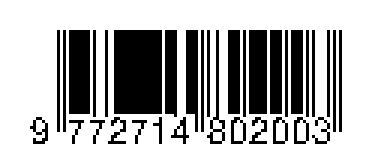IbM KELURAHAN GULUREJO (KAWASAN PENGRAJIN BATIK) UNTUK MENGATASI MASALAH PENCEMARAN LINGKUNGAN AKIBAT LIMBAH CAIR BATIK
DOI:
https://doi.org/10.34151/technoscientia.v7i1.608Keywords:
craftsmen, batik, wastewater, pollutionAbstract
Batik wastewater in the hamlet Mendiro and Sembungan, Village Gulurejo, District LendahKulonProgo Regency is still a problem for batik craftsmen and society. Contamination of well water and river water in the Village Gulurejo due batik effluent, causing adverse health effects and cause a skin disease such asItchingand other skin disorders.The purpose of this IbM program is to increase knowledge about the technology and batik effluent treatment procedures batik so that the quality of effluent discharged to the environment according to the Liquid Waste Quality Batik is valid and does not pollute the environment. To achieve these objectives there should be a batik wastewater treatment equipment that is easy in operation and can be used interchangeably by batik craftsmen. Achieved results or findings is the realization of sewage treatment plants in the form of batik assemblies elektrokoagulan engineering technology with a method that is effective, efficient, easy in operation and requires a power source of120 watts. Wastewater treatment plant that includes batik: batik waste tank capacity of 500 liters; elektrokoagulan tub capacity of 100 liters; 2 bath deposition capacity of 4,000 liters; 3 bath filtration capacity of 6000 liters which includes coral filter media, split and sand & activatedcharcoal.
References
Davis, ML. dan Conwell, DA. 1991. Introduction To Environmental Engineering. McGraw-Hill International Edition. Singapore.
Eckenfelder. 2000. Industrial Water Pollution Control. 3th ed. McGraw Hill Book Co. Singapore.
Hammer, M.J. 2004. Water and Wastewater Technology. 5th ed. Prentice Hall Inc., Upper Saddle River. New Jersey.
Manahan, S.E. 1992. Toxicological Chemistry. 2nd Edition. Lewis Publishers. Tokyo.
Metcalf & Eddy. 2003. Wastewater Enginee-ring: Treatment, Disposal and Reuse. 5th ed. McGraw Hill Book CoNew York.
Peraturan Gubernur DIY No. 7 Tahun 2010 Tentang Baku Mutu Limbah Cair Industri Batik.
Sarto.1994. Pengolahan Limbah Cair Secara Kimia (Netralisasi, Koagulasi dan Flokulasi). Kursus Singkat Pengelola-han Limbah Cair. Pusat Penelitian Lingkung- Hidup UGM. Yogyakarta.
Soemirat. J., 2003, Toksikologi Lingkungan. Gadjah Mada University Press, Yogyakarta,
Tchobanoglous, G., Burton, F. L. dan Stensel, H. D. (2003). “Waste Water Engineering: Treatment and Reuse”. Metcalf & Eddy Inc., New York.







